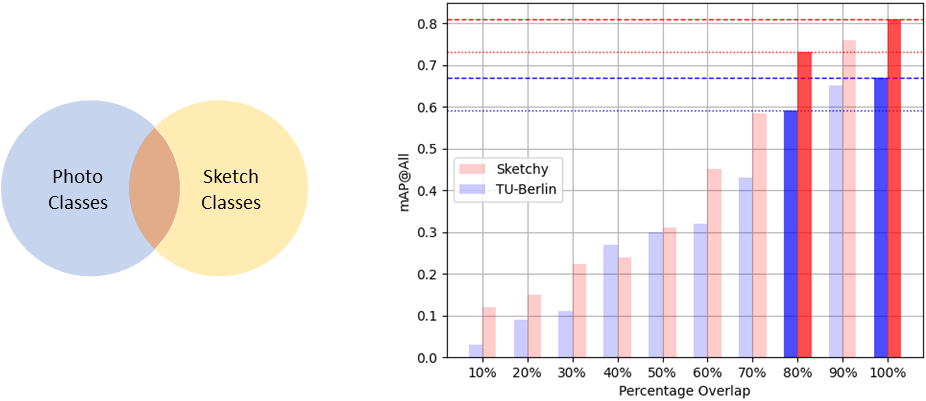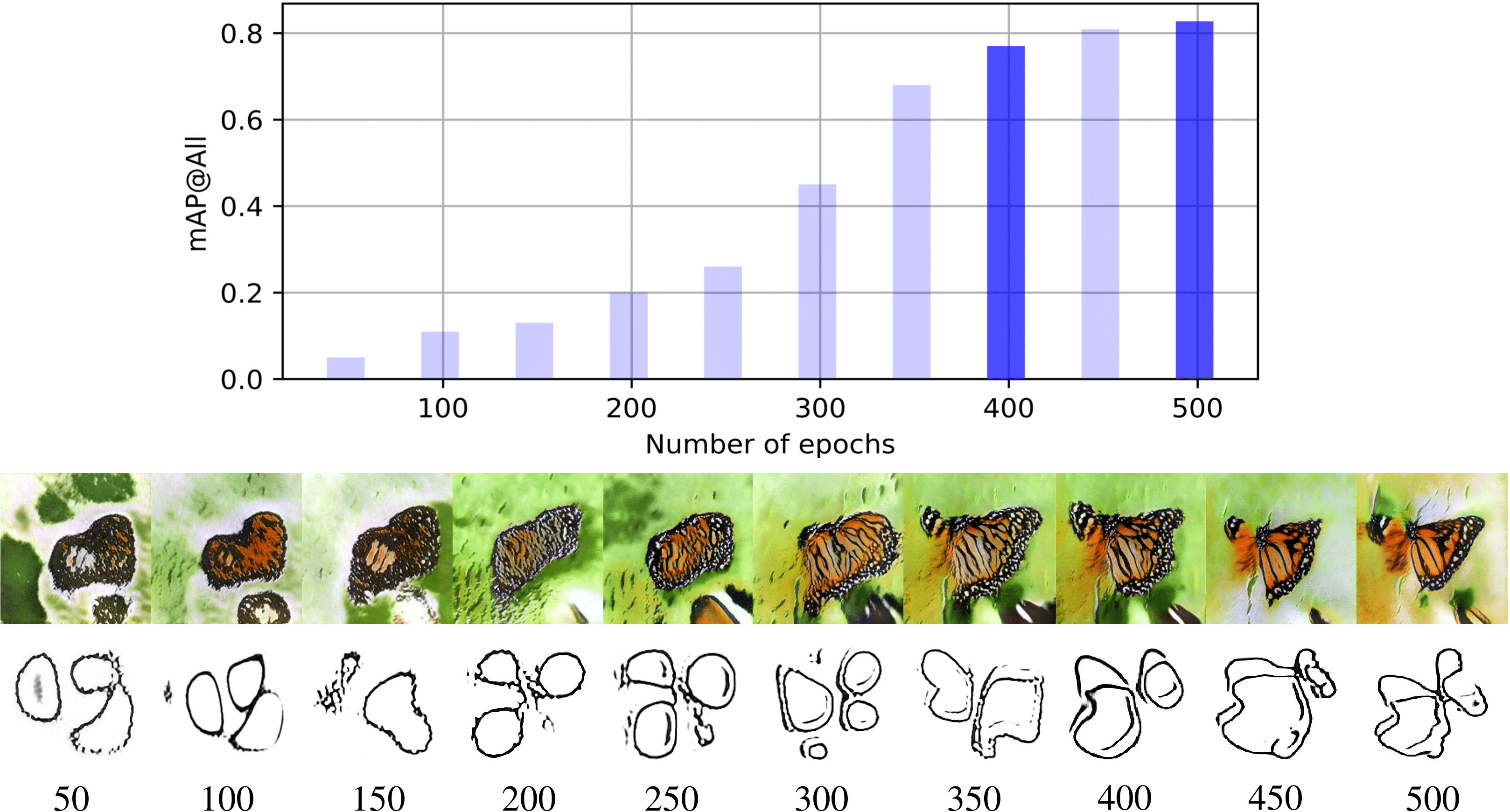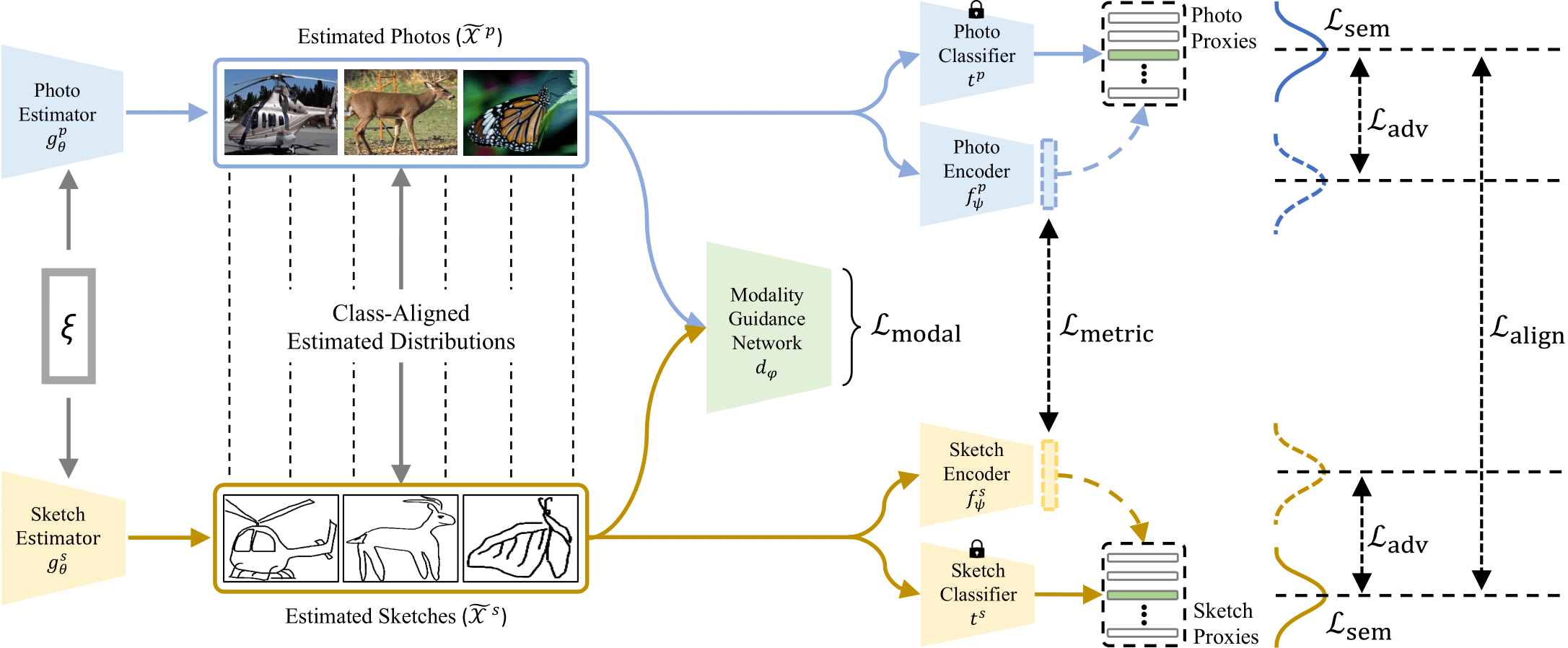
Data-free photo and sketch reconstructions of the Sketchy and TU-Berlin datasets produced by our estimator networks.

Photo and sketch reconstructions without (left) and with (right) the Class-Alignment loss. Each column corresponds to a
single reconstruction step using a common input noise vector fed in to the photo and sketch estimators respectively.

Reconstructed photos and sketches of an Apple in the presence and absence of the Modality Guidance loss.

Reconstructions obtained by using Metric-Agnostic Adversarial Estimation, with respective
class-scores assigned by the teacher and the student.

DF-SBIR performance of our model when the classifiers (teachers) are trained on only partially overlapping sets of classes.

Variation in mAP@all, as well as reconstruction quality across epochs.







